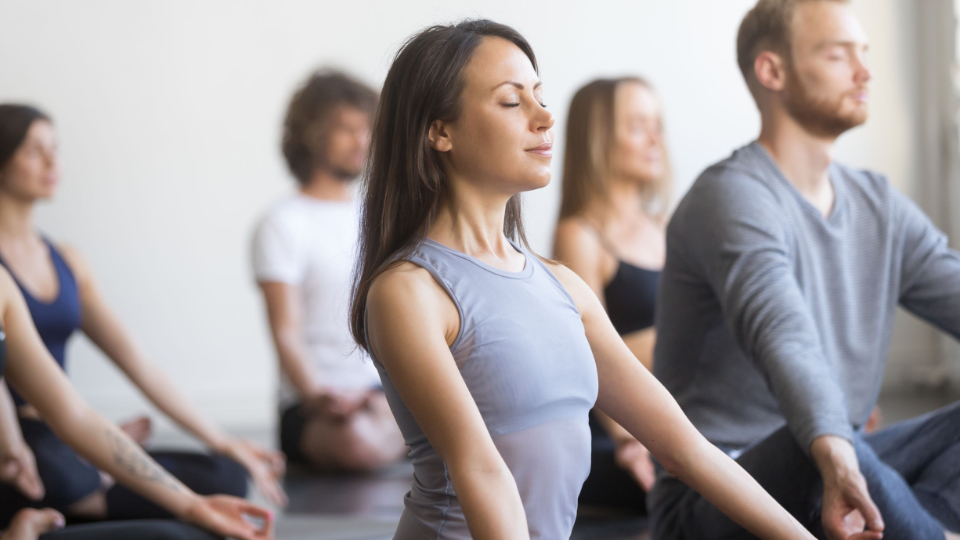Inhale and exhale slowly. Breathing may seem like a simple action, but often it has been neglected.
Simple breathing exercises like deep breathing is one of the best ways to lower stress in the body and can make a big difference in your stress management if you make them part of your regular routine.
Breathing exercises are easy to learn and you can do different exercises to see which work best for you.
Plus we include a breathing exercise that is endorsed by health experts which can help people who already have coronavirus symptoms such as a cough and shortness of breath to feel better.
How To Add Breathing Exercise
It does not need a lot of time to practice breathing exercises. Whenever you are free, you can set your things aside and pay attention to your breathing. Here are a few ideas to get started:
- Begin with just 5 minutes a day, and increase your time as the exercise becomes easier and more comfortable.
- If 5 minutes is too long for you to begin with, start with just 2 minutes.
- Practice multiple times a day. Schedule set times or practice conscious breathing as you feel the need.
- Choose a place to do your breathing exercise. It could be in your bed, living room floor, or in a comfortable chair.
- Do not force it, as this can make you feel more stressed.
- Try to do it at the same time once or twice a day.
- Wear comfortable clothes.
Deep Breathing
Deep breathing can help you to relieve shortness of breath by preventing air from getting trapped in your lungs and helping you to breathe in fresh air. It can help you relax and relieve stress.

How to do this:
- Get comfortable and lie on your back in bed or on the floor with a pillow under your head and knees. You can also sit in a chair with your shoulders, head, and neck supported against the back of the chair.
- Breathe in through your nose. Let your belly fill with air.
- Then, breathe out through your nose.
- You can go ahead to place one hand on your belly, and place the other hand on your chest.
- As you breathe in, feel your belly rise. As you breathe out, feel your belly lower. The hand on your belly should move more than the one on your chest.
- You can take three more full, deep breaths. Breathe fully into your belly as it rises and falls with your breath.
Breath Focus Technique
This deep breathing technique uses imagery or focus words and phrases as you choose something that makes you smile, peace or relax.
As you gradually build up your breath focus practice, you can start with a 10-minute session. Gradually increase the duration until your session is at least 20 minutes.
How to do this:
- Close your eyes.
- Take a few big, deep breaths.
- Then breathe in and as you do that, imagine that the air is filled with a sense of peace and calm. Try to feel it throughout your body.
- Breathe out. While you are doing it, imagine that the air leaves with your stress and tension away.
- Now use a word or phrase with your breath. As you breathe in, say in your mind, “I breathe in peace and calm.”
- As you breathe out, say in your mind, “I breathe out stress and tension.”
- After that, continue for 10 to 20 minutes.
Humming Bee Breath
This unique sensation yoga breathing practice will helps to create an instant calmness and, especially soothing around your forehead. Some people use humming bee breath to relieve frustration, anxiety, and anger. You may want to practice it in a place where you are free to make a humming sound.

How to do this:
- Choose a comfortable seated position.
- Close your eyes and relax your face.
- Place your index fingers on the tragus cartilage that partially covers your ear canal.
- Inhale, and as you exhale gently press your fingers into the cartilage.
- Keeping your mouth closed, make a loud humming sound.
- Continue for as long as is comfortable.
Diaphragmatic Breathing
Belly breathing can help you use your diaphragm properly. You can do belly breathing exercises when you’re feeling relaxed and rested. Practise diaphragmatic for 5 to 10 minutes for about 3 to 4 times per day.
When you first practise this technique, you may feel exhausted. But over time the technique should become easier and more natural.

How to do this:
- Lie on your back with your knees slightly bent and your head on a pillow.
- Place a pillow under your knees for support.
- Place one hand on your upper chest and one hand below your rib cage, allowing you to feel the movement of your diaphragm.
- Slowly inhale through your nose, feeling your stomach pressing into your hand.
- Keep your other hand as still as possible.
- Exhale using pursed lips as you tighten your stomach muscles, keeping your upper hand completely still.
If you want to make the exercise more challenging, you can place a book on your abdomen.
Once you learn how to do belly breathing lying down you can gradually increase the difficulty by trying it while sitting in a chair. You can then practice the technique while performing your daily activities.
Pursed Lip Breathing
This simple breathing technique will make you slow down your pace of breathing by will you apply deliberate effort in each breath.
You can practice pursed lip breathing at any time. It may be especially useful during activities such as bending, lifting, or stair climbing.
You can practice this technique 4 to 5 times a day when you begin in order to correctly learn the breathing pattern.
How to do it:
- Relax your neck and shoulders.
- Keeping your mouth closed, inhale slowly through your nose for 2 counts.
- Pucker or purse your lips as like you were going to whistle.
- Exhale slowly by blowing air through your pursed lips for a count of 4.
COVID-19 Breathing Relief Technique
The technique shared by a British Doctor, Dr. Sarfaraz Munshi from Queen’s Hospital in London recommend a person who is infected with any condition that leads to a lot of mucus can be benefited from it and may need to repeat it several times a day.
How to do it:
- Take a deep breath in.
- At the end of it, hold your breath for five seconds, then release.
- Do this five times, in a total of five breaths.
- Next, take a sixth deep breath in, then at the end of it cough strongly covering your mouth when you do so.
- The six breaths plus cough at the end represent once cycle. Repeat this cycle twice.
The idea is to get the lower part of a person’s lungs to expand so that any mucus that’s collecting there can be dislodged and then coughed out.
The initial deep breathing helps all the airways to open up, then the cough at the end of the sixth breath helps loosen the mucus that’s been affected by those deep breaths.
This breathing technique isn’t a cure-all for a COVID-19 infection nor it could prevent someone from getting COVID-19.
Do your best to stay healthy, overall, in any ways you can like washing your hands regularly, disinfect your personal space, practice social distancing and follow stay-at-home orders.
If you are allowed to exercise outdoors, do it alone and keep it to your neighbourhood. Bring a mask with you to wear after your workout.
Breathe Better Today
During the day, you can try these breathing techniques right away if you feel stress or anxiety.
Do take your time to experiment with these different types of breathing techniques and find which suits you the most.
You can also spend a certain amount of time for at least a few times per week. But, if you feel discomfort, discontinue the practice and consult a respiratory therapist or a yoga teacher who specialises in breathing practices.
How do you manage your stress? Let us know in the comments below.
What is the best breathing technique for anxiety or stress?
Deep breathing can help you relax and relieve stress. This technique uses imagery or focus words and phrases as you choose something that makes you smile, peace or relax.
What exercises improve breathing?
You can perform diaphragmatic breathing exercises when you’re feeling relaxed and rested. Practise diaphragmatic for 5 to 10 minutes for about 3 to 4 times per day will help improve your breathing.
Is breathing exercises good for me?
Yes, it is the best way to lower stress in the body and can make a big difference in your stress management if you make them part of your regular routine.
Can breathing exercises help me to sleep better?
Doing breathing exercises before sleep can help you stay relaxed, stress free, most importantly, allowing yourself to sleep better at night.





